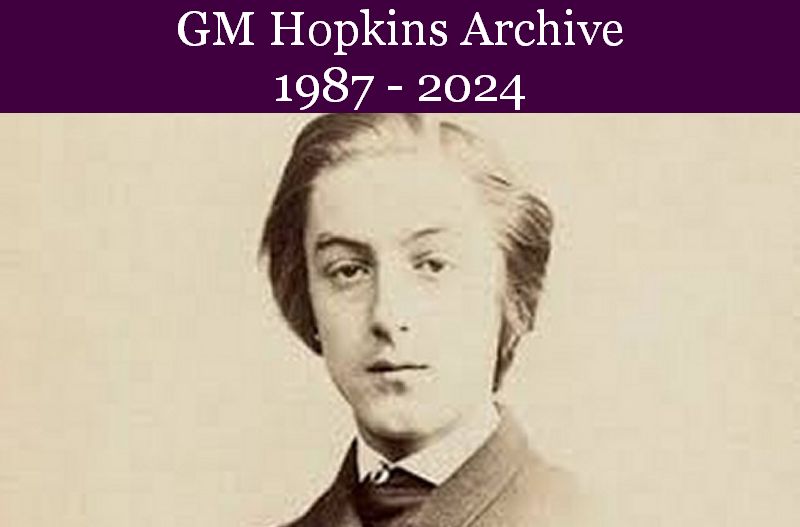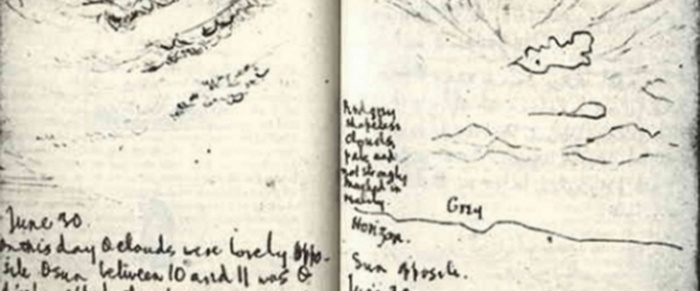Index of Lectures from Hopkins Literary Festival 2013
An Unusual Friendship: Hopkins and Bridges
William AdamsonUniversity of Ulm
Germany
Gerard Hopkins and Robert Bridges might be considered an odd couple, physically very unalike and divided by many psychological and religious differences, and not least by their approach to and understanding of poetry. But despite this, the friendship that began at Oxford University in 1863 was to last twenty-six years, right up until Hopkins’ death in 1889. Hopkins’ relationship with Bridges is readily accessible to us, as the letters he wrote to him provide a detailed view of the nature of his friendship...
Gerard Hopkins and Robert Bridges
Languages Centre,
University of Magdeburg,
Germany
A short consideration of the concepts Hacceitas, Pitch, Inscape and Instress throws light for Eamon Kiernan, on Hopkins' sacramental aspiration as a poet.
Kiernan draws on the Medieval German mystic, Meister Eckhart and to the reception of German Idealism in Nineteenth Century Oxford, through which Eckhart's influence might have penetrated to Hopkins. This Eckhartian echo yields an interesting perspective on Gerard Hopkins as a poet of sacramental poems and as a soon-to-be Catholic priest.
Hopkins Critic
Elaine Murphy,Elaine Murphy, L.G.S.M.
Founder Member and Organiser of The Gerard Manley Hopkins Society.
Reading Hopkins over the years, I have been struck by the exact and exacting standards by which he judged certain works of art and literature. Clearly, he integrated these standards with his creative work as a poet and his priestly activities as a Jesuit. His had a dedicated and perceptive mind; a purity of heart. He explored his world with the delicate refinement of an Oxford scholar and truthful, vigorous intellect. ‘There was single eye’. .. Hopkins as Critic
Love in Writings of Gerard Manley Hopkins
Duc Dau,University of Western Australia
In Hopkins’s surviving sermons, the word ‘love’ appears 125 times.1 Of course, this statistic doesn’t include variations such as ‘loved’, ‘loveable’, ‘lover’, ‘loving’, etc. – just the word ‘love’. It’s for this and other reasons that I have long been interested in Hopkins’s views and experiences of love. I am especially interested in the love that he actively cultivated, celebrated and felt was requited, which is his love for Christ. I came to the conclusion that Hopkins’s conversion was one of his most romantic acts.
Love in Writings of Gerard Manley Hopkins hereThe State of the English Church when Hopkins Left
Reverend Douglas Grandgeorge,Presbyterian Pastor,
New York
USA.
For 42 years, American poet Emily Dickinson and English poet Gerard Manley Hopkins were alive at the same time, from his birth in 1844 until her death in 1886. Both were decidedly imaginative writers, each of whom developed a highly inventive style unique to themselves and almost impossible to duplicate. Neither knew of the other’s existence. Both struggled with despondency, and both found peace of mind in the cultivation of an exquisite lyrical art form ...
The American Hopkins: Hart Crane, An Influence Study
Robert A. Smart,Quinnipiac University,
USA
According to Crane’s (and Hopkins’) biographer Paul Mariani of Boston College, it was fellow poet and literary critic Yvor Winters who introduced the younger Crane to the reclusive Jesuit. In December 1927, Winters read The Wreck of the Deutschland and other poems to Crane, who responded enthusiastically: [a letter to Winters, January 28 1928] “It is a revelation to me—of unrealized possibilities. I did not know that words could come so near a transfiguration to pure musical notation—at the same time retaining every minute literal signification! What a man—and what daring!” (Crane 568). Crane was so taken by the reclusive Jesuit poet that he borrowed Winters’ copy of Robert Bridges’ published collection of Hopkins’ poems, threatening that he might not ever return it unless he could find a copy of his own. ...
read Robert Smart's Hart Crane and Hopkins hereThe Poet as Prophet
James P. Mackey, Theologian,University of Edinburgh (emeritus),
Scotland.
He who is now called a prophet (nabi) in time past was called a seer (roeh)’ I Samuel 9:9
That is a poem of Wallace Stevens, entitled ‘Angel Surrounded by Paysans,’ and he commented on this poem in one of his letters (No.831 of his Collected Letters, I had better say, since I am probably surrounded here by more pernickety scholars than paysans). Here is what he wrote: ‘In Angel Surrounded by Paysans the angel is the angel of reality. This is clear only if the hearer is of the idea that we live in the world of the imagination, in which reality and contact with it are the great blessings. For nine readers out of ten, the necessary angel will appear to be the angel of the imagination and for nine days out of ten that is true, although it is the tenth day that counts.’ What happens, then, on the tenth day? ...
Read James Mackey's lecture on the Poet as Prophet here


